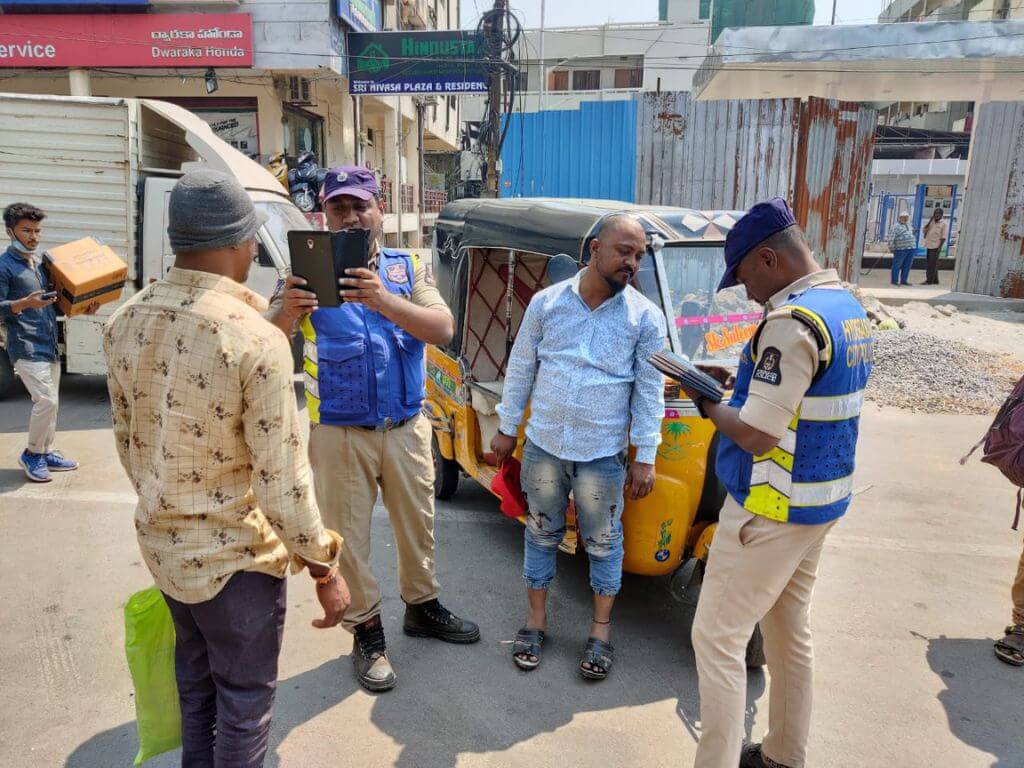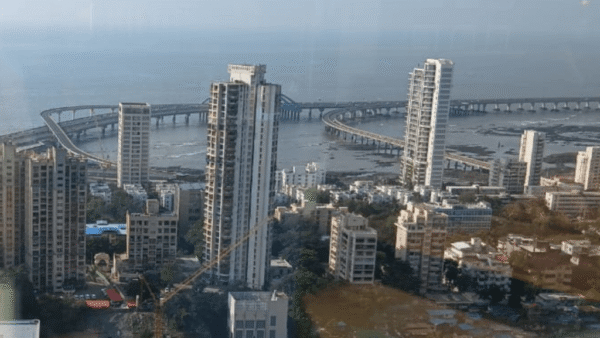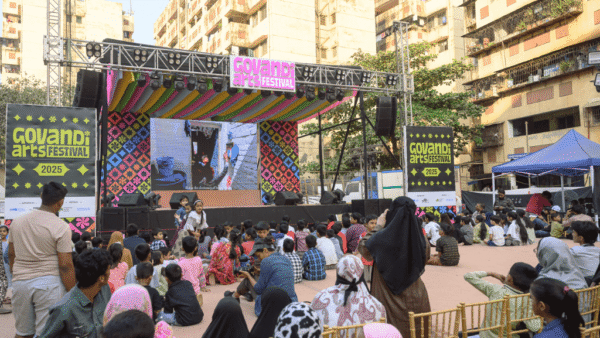A city born at the start of the millennium, Cyberabad is India’s portal to what can go wrong with technology and digitalisation in cities. Designed to be a mini-Singapore, Cyberabad, the HITEC part of Hyderabad, became the information technology (IT) back office for global supply chains exporting software as globalisation began to build the modern Silk Road. Now, Hyderabad is exporting new policing models with “real-time policing” being carried out, cops armed with a smartphone, using technology to command and control the city – and citizens are paying the price.
Policing has been digitised to the point that few aspects of it are done without the smartphone. Old colonial practices of maintaining case diaries and filing first information reports (FIRs) have been digitised. An alert on their smartphones tells beat cops where to go and whom to police. Regular beat policing has been replaced by electronic beat policing, where the police personnel’s location is tracked real-time through GPS satellites to provide near real-time response to emergency calls. At the “copless” traffic junctions in the city, physical cops have been replaced with cameras everywhere, traffic offences have been automated, and instructions commanded to the people on the street through loudspeakers networked to the Cloud.
Every corner of the city is constantly under observation with 360-degree cameras linked to every cop through the smartphone. Each camera is worth more than a hundred human police, or so we are told. Facial recognition systems imported from Japan makes it seem as if the police department is secretly looking for spies. These systems – or surveillance infrastructure – have been unleashed on people under the guise of tracking missing children. The list of people that the police are searching for is well beyond the list of missing children. Every individual who checks into a hotel has his/her data uploaded onto a blockchain to be further processed through this surveillance infrastructure.
The police justify this set-up as necessary to prevent crimes: Predictive policing by using big data aided with new algorithmic forms of policing. To achieve complete prevention of crimes, the entire city has been placed under perpetual surveillance; the question of liberties and rule of law is of no consequence. It might sound like a science fiction novel, but this is the reality of millions of Hyderabadis.

Photo: Telangana Police Department via Twitter
In the old parts of Hyderabad, this technocratic version of policing comes apart. Poorer neighbourhoods, densely populated with working-class people, migrant workers and other marginalised, do not have the means to plug into this version. How can cameras be installed in every household when people are hardly able to afford basic sustenance?
Here, modern tools aid the violence of the police. People are stopped on streets to be photographed for facial recognition searches which will identify and compare them with lists of fugitives or “wanted” from across the country using Criminal Tracking Network and Systems. Stop and scan searches are carried out where the police do not have CCTV cameras. The colonial practice of collecting fingerprints has evolved into photographs, iris scans, facial recognition, and anything new that technology can offer.
The police maintain a 360-degree profile of all citizens and encourage the affluent to further collect and share details of the working class who service it through citizen-friendly smartphone applications. As part of the Cordon and Search Operations (CASO), a toned-down version of the military tactic of door-to-door search, the Hyderabad police also collects identity details and registration documents of personal vehicles, if any. Often unaware of the automated traffic fines from cop-less traffic junctions, people find it difficult to navigate this and the police temporarily seize their vehicles. Old biases have crept into the futuristic criminal databases that the police are building.
This is the face of digitalisation for most people.
The city as panopticon
The cordon searches in civilian neighbourhoods are a form of militarisation with the police forcefully cordoning and occupying the streets. This is equally true of the facial and fingerprint recognition systems which were traditionally used to police the borders. The door-to-door searches are like that of a nation state identifying foreigners. The data collected from these door-to-door searches was analysed to identify 127 foreigners of suspicious nature and the information was used to direct the Unique Identification Authority of India to verify their nationalities and cancel the Aadhaar numbers they had acquired.
However, by and large, the police have been successful in transforming the city into a figurative panopticon with real-time information processing that few cities in the free and democratic world probably have. Panopticon, literally, is a circular prison around a central tower from where prisoners are watched all the time. Hyderabad’s manifestation of the panopticon are the new surveillance towers of Telangana State Police Command and Control Centre. A literal monstrosity at the heart of the city, the 18-floor towers resemble the US National Security Agency’s headquarters at Fort Meade, and are designed to house data centres, intelligence wings, and war rooms to command the entire city and the state at large through a carefully-laid network of lakhs of cameras which feed in data round-the-clock. Designed especially for real-time policing, this is more like an Orwellian machine that challenges democracy.
The emergence of these new forms of policing in Hyderabad is not accidental or new, but instead a planned import from different parts of the networked world. The 360-degree policing using databases has been imported from Estonian e-police and the stop-and-scan searches after 9/11 attacks in New York, the stop-and-frisk searches of New York Police Department, the cop-less junctions and Automatic Number Plate Recognition systems from London Metropolitan Police Department. This effort is also a direct result of the Indian state’s intent to modernise policing after the intelligence failures of 26/11 Mumbai attacks. Hyderabad was able to attract all the initial grants to experiment and evolve new policing practices from the Ministry of Home Affairs.

Photo: Telangana Police Department via Twitter
Machine takes over policing
Urbanists such as Jane Jacobs and urban planners such as Oscar Newman have worked on ideas of natural or more organic surveillance in cities, where streets are policed and defended by people who live there using street designs and so on.
Preventing crime in a city through design of the urban environment is among the ideas associated with Jacobs who argued that urban design could reduce crime as well as foster an atmosphere of security. The phrase “eyes on the street” comes from her work, of course. She stated that low-rise and mixed-use neighbourhoods with eyes on the street would minimise crime and allow residents to “police” their own areas, and such self-policing enabled by design could impact the actual rate of crime. In her book “Death and Life of Great American Cities” (1961), she wrote that “urban design could promote social connection and deter transgression by literally placing people closer together with clear sight lines.”
Newman argued on similar lines in his Defensible Space theory. In “Design Guidelines for Creating Defensible Space” he describes defensible space as a “residential environment whose physical characteristics – building layout and site plan – function to allow inhabitants themselves to become key agents in ensuring their security” and argues that an area is safer when people feel a sense of ownership and responsibility for that community. “Defensible space, therefore, is a socio-physical phenomenon,” writes Newman. In practice though, this theory did not quite work out the way he had envisaged.
The basic minimum should be that urban design and infrastructure empowers citizens. However, the new tech-driven policing infrastructure increases State control over citizens and its role in crime prevention is up for debate. The massive number of cameras on streets do not prevent crimes but merely record them. The human police are replaced with a machine police; people cannot negotiate with machines.
The effect of this digitalisation was felt during the COVID-19 lockdowns as people realised the authoritarian nature of the tech to control an entire population – vehicles seen on streets, even responding to emergencies, were fined using the automatic number plate recognition system, facial recognition system was retrofitted to identify people without masks but the police demanded that offenders remove masks when they were photographed for violating lockdown rules, every petty offence was geotagged and criminal profiles created to be stored for 75 years.

Photo: Telangana Police Department via Twitter
Ground for experimenting neo-liberal systems
The true impact of this surveillance machine has been on people’s right to free assembly and protest. It is now near- impossible to protest in Hyderabad given the surveillance nature of policing. There is no way to gather, or travel in numbers, for a protest without being watched – and stopped. Like Singapore, Hyderabad has been transformed into a no-protest zone, a much-wanted stable atmosphere for global investments.
Hyderabad’s digitalisation of policing, under the guise of modernising it, has turned into an experimentation of techno-dystopian systems on a live population, the burden of which is worst on the poor and marginalised. Every new policing practice has been tested on people here. This is the outcome of an economic model being followed. The IT sector has been more than happy to build these surveillance systems and play around with emerging technologies to make cities “smart” but rarely does it have discussions on the drawbacks, impact, or ethics of it all.
The debates around surveillance often make references to fascist nature of it all but it is not a fascist organisation that promotes such surveillance infrastructure and experimentation; instead, it is the neo-liberal system with ideas borrowed from around the world with the purpose of powering the economy and protecting it. Globalisation has increased urbanisation, increased migration makes it harder for existing policing systems to manage the city so that the city’s economy can go on undisturbed. This is where the tech-driven systems come in.
The police personnel on the street are unaware of the global networks and processes which brought these practices to our doorstep. They are happy to robotically conduct their C-DAT searches (Community Data Analysis and Tools) inspired from the NYPD, they are proud of their new tools which they advertise on social media as “people-friendly policing”. The smartphone replacing the lathi does not make the policing better or more empathetic. Policing the streets is among their primary duties but merely increasing cameras on the street linked to a surveillance network is not the way forward. A city’s streets must be people-friendly, where the police do their job with friendly eyes.
The 24×7 surveillance network which passes off for policing is here to stay. It will possibly be weaponised by various political establishments. How this can be made more accountable to people, if not totally demolish the panopticon, is part of the new urban challenge now. Maybe, a revolution is in order but then the panopticon has been designed to kill the very idea of people’s assembly, an inalienable democratic right. How soon before other cities get their own panopticons?
Srinivas Kodali is an interdisciplinary researcher and digital rights activist working on data and society. He advocates for privacy, transparency and accountability in the digitalisation process.
Cover photo: Telangana Police Department/ Twitter




